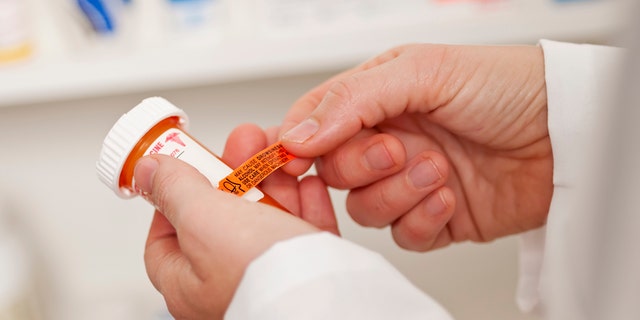‘Silent pandemic’ warning from WHO: Bacteria killing too many people due to antimicrobial resistance
The World Health Organization (WHO) is warning of a “silent pandemic” of antimicrobial resistance from infections caused by deadly pathogens that doctors are not able to cure because of a lack of novel agents.
That’s according to an early release of special presentations by Dr. Valeria Gigante and Professor Venkatasubramanian Ramasubramanian of an online “pre-meeting” of the European Congress of Clinical Microbiology & Infectious Diseases on April 15 to 18 in Copenhagen, Denmark.
“Antibiotic resistance is one of the major concerns in modern medicine today,” Dr. Aaron Glatt, chief of infectious diseases at Mount Sinai South Nassau Hospital on Long Island, New York, told Fox News Digital.
EUROPEAN DRUG REGULATOR DETERMINES ANTIBIOTIC SHORTAGE NOT A ‘MAJOR EVENT’
“There is a dearth of safe, effective and inexpensive agents to use to treat many of these significant infections,” added Glatt.
“It is critical that new and innovative products be investigated.”
Some five million deaths are associated every year due to antimicrobial resistance, according to the release.
The treatment for drug resistant infections involves newer agents that are more expensive than standard therapies, so poor people are disproportionally affected by antimicrobial resistance, the release noted.
“More than 2.8 million antimicrobial-resistant infections occur in the U.S. each year, and more than 35,000 people die as a result,” the Centers for Disease Control and Prevention (CDC) noted on its website, according to 2019 data.
CDC ISSUES ALERT ABOUT DRUG-RESISTANT STOMACH BUG’S SPREAD
“When Clostridioides difficile — a bacterium that is not typically resistant but can cause deadly diarrhea and is associated with antibiotic use — is added to these, the U.S. toll of all the threats in the report exceeds 3 million infections and 48,000 deaths.”
Resistant germs, such as bacteria and fungi, develop resistance to antibiotics and antifungal agents when they’re able to grow, even though the drug is trying to kill them.
“It does not mean our body is resistant to antibiotics or antifungals,” the CDC said on its website.
What new drugs are being studied?
A 2021 WHO review revealed there are some 27 antibiotics in research trials against pathogens designed as “critical” by WHO — such as two bacteria known as Acinetobacter baumannii and Pseudomonas aeruginosa.
The WHO only considers a small subset of the antibiotics currently in development in clinical trials “innovative” enough to overcome resistance.
“Pseudomonas and Acinetobacter are always the two bacteria most commonly listed, although there are certainly more drug-resistant forms of candida (yeast) infections that you could add to the list,” Dr. Cameron Wolfe, infectious disease specialist at Duke University Hospital in Durham, North Carolina, told Fox News Digital.
There is also an “increasing number of environmental bacteria with really significant resistance — [such as] recent extensively drug resistance Shigella, and ongoing municipal water outbreaks of Mycobacterium abscess,” he said.

But the WHO only considers a small subset of the antibiotics currently in development in clinical trials “innovative” enough to overcome resistance.
“In the five years covered by this report, we have had just 12 antibiotics approved, with only one of these — Cefiderocol — able to target all the pathogens deemed critical by WHO,” said Gigante, team lead in WHO’s Antimicrobial Resistance Division in Geneva, Switzerland, in the press release.
Most strains that acquire this gene are resistant to all commonly used antibiotics, rendering them a “superbug.”
Experts particularly worry about one drug-resistance mechanism that is growing among bacteria worldwide. Certain bacteria can acquire a gene that produces an enzyme known as New Delhi metallo-beta-lactamase 1 (NDM-1).
REUSABLE WATER BOTTLES CONTAIN MORE BACTERIA THAN TOILET SEATS DO, SAYS STUDY
This gene allows the bacteria to become “resistant” by breaking down the “last line of defense” of a class of antibiotics that treat a broad spectrum of different bacteria, known as carbapenems — which are often prescribed when other antibiotics have failed, per the release.
Most strains that acquire this gene are resistant to all commonly used antibiotics, rendering them a “superbug,” according to multiple reports.

Escherichia coli and Klebsiella pneumoniae are the most common bacteria to make this gene, “but the gene for NDM-1 can spread from one strain of bacteria to another,” per the release.
Why isn’t more research being done?
“You only ever need an antibiotic ideally for a brief period of time, yet a cholesterol drug or an HIV antiviral is forever,” Wolfe noted.
Pharmaceutical companies must invest in the research and development phase to find an antimicrobial agent that will combat drug resistant pathogens, experts say.
“Look at how many different statin drugs we have that are basically identical.”
Yet these drugs are as likely to fail during this process as drugs for other diseases that may yield a much better return on the investment, such as cancer and heart drugs.
“Problem is a mix of scientific difficulty (these are complex drug resistance mechanisms to overcome, that often require very different drugs mechanistically), regulatory complexity (FDA approval path is long and extremely costly, and the approval pathway is different in every country), and economics (it’s often simply cheaper to bring ‘me-too’ drugs to the market than try and completely redesign a new drug),” Wolfe told Fox News Digital in an email.

“Look at how many different statin drugs we have that are basically identical,” he added.
He continued, “How many SSRI [selective serotonin reuptake inhibitor] depression drugs are available with minimal differences compared to the prior? Yet companies can make a stronger bet in that space, because high cholesterol or depression doesn’t evolve back against you.”
The last novel antibiotic class discovered was in the 1980s, with the first antibiotic from this class, daptomycin, hitting the market in 2003, per the release.
Why does resistance develop?
Overuse and improper use of antimicrobials breed resistance. The CDC estimates that some 47 million antibiotic prescriptions in doctors’ clinics and emergency departments — an estimated 28% of all prescribed in these settings — are annually prescribed in the U.S. for infections that don’t require antibiotics, such as colds and the flu.
CLICK HERE TO SIGN UP FOR OUR HEALTH NEWSLETTER
There is also a global trend for pathogens to develop resistance to antimicrobials much faster after they’re introduced.
Between 1930 and 1950, the average time to develop resistance was 11 years — but this decreased to only two to three years between 1970 and 2000, per the release.
“Even though the United States has far less resistance in gram negative infections, compared to the Low and Middle Income Countries (LMIC), it is a matter of time before global travel and bacterial ingenuity catches up,” Ramasubramanian, president of the Clinical Infectious Diseases Society of India and Consultant Infectious Diseases & Tropical Medicine, Apollo Hospitals, based in Chennai, India, told Fox News Digital.
Read the full article Here


